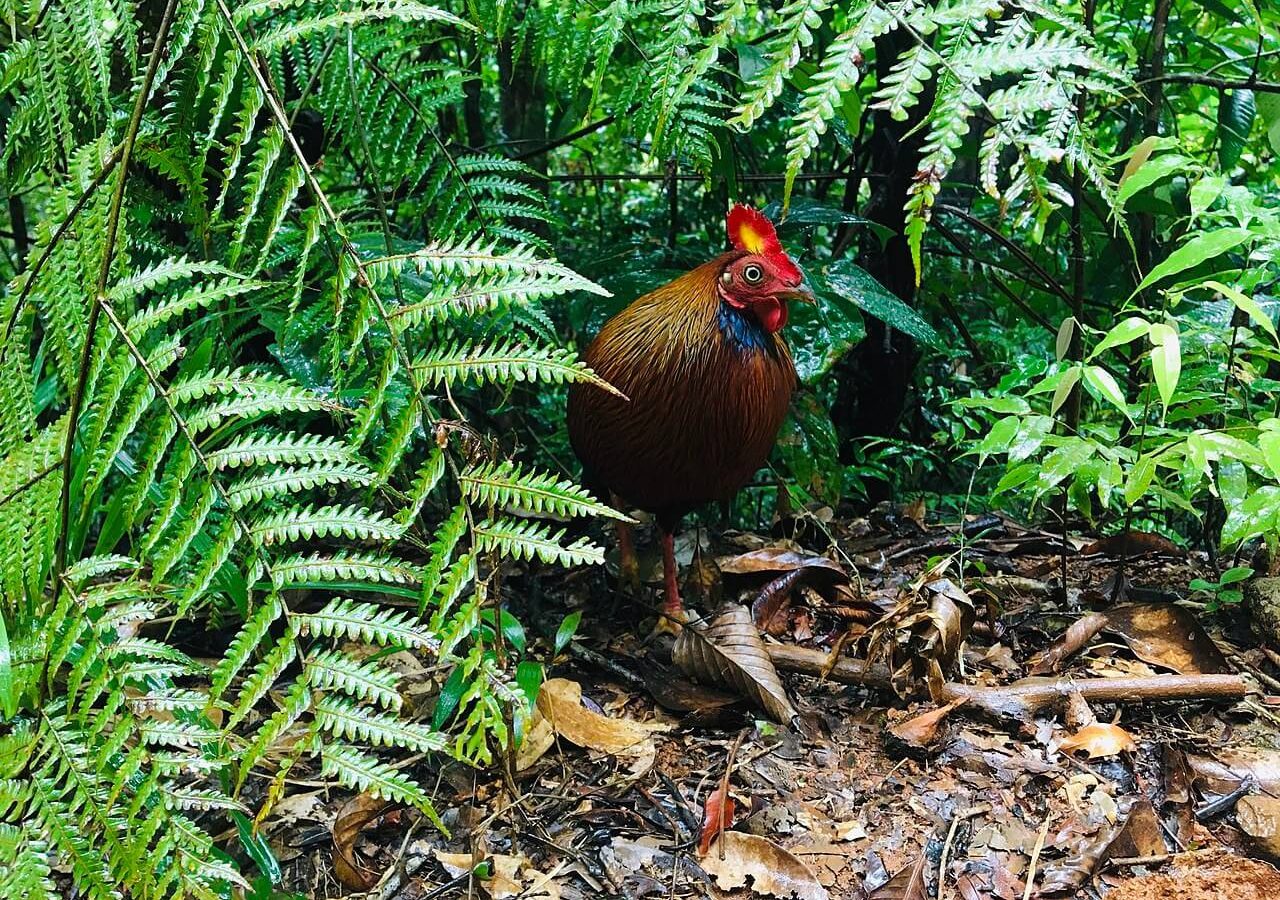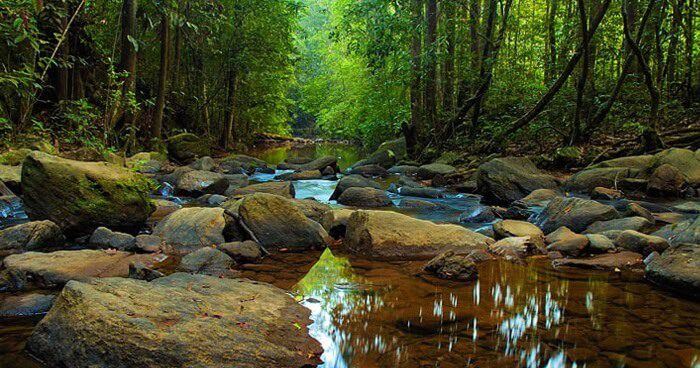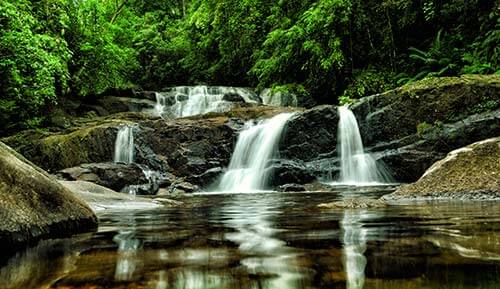Beyond the Beaches: A Trekker’s Guide to Sinharaja, Sri Lanka

Why Go?
Imagine stepping into a world painted in a thousand shades of green, where the air is thick with the scent of damp earth and wild blossoms. A constant, buzzing symphony of insects, chirping birds, and croaking frogs fills your ears. This isn’t a fantasy—it’s Sinharaja Forest Reserve, a UNESCO World Heritage Site and Sri Lanka’s last remaining stretch of virgin tropical rainforest.
Sinharaja, meaning “Kingdom of the Lion,” is more than just a forest; it’s a living, breathing museum. It’s a place where ancient trees form a canopy so dense that sunlight dapples the forest floor in shifting patterns. Here, you’ll find creatures that exist nowhere else on Earth. It’s a journey back in time, an escape from the modern world, and a chance to connect with nature at its most raw and powerful.

The Travel Guide
Best Time to Visit
Sinharaja is a rainforest, so a little rain is always part of the adventure! However, the timing of your visit can change the experience completely.
- The Drier Seasons (January to early April & August to September): This is the most popular time to visit. The paths are less muddy, the sun makes a more frequent appearance, and the leeches are a bit less enthusiastic. It’s perfect for long treks and birdwatching.
- The Wet Seasons (May to July & October to December): Don’t dismiss the rainy season! The forest comes alive in a different way. The waterfalls are gushing and spectacular, the colours are deeper, and there are fewer crowds. The rain transforms the forest into a mystical, moody landscape, though you’ll need to be prepared for mud and, yes, more leeches.
What to Do
Your experience in Sinharaja is all about immersing yourself in the environment.
- Take a Guided Trek: You can’t enter the forest without a licensed guide, and honestly, you wouldn’t want to. These local guides are fountains of knowledge. They’ll spot a camouflaged lizard you’d walk right past, identify a bird by its call, and show you which plants are used in traditional medicine. You can choose treks from a few hours to a full day.
- Become a Birdwatcher: Sinharaja is a paradise for bird lovers. It’s home to over 95% of Sri Lanka’s endemic bird species. Keep your eyes peeled for the stunning Sri Lanka Blue Magpie, the loud Red-faced Malkoha, and the Ashy-headed Laughingthrush.
- Discover Hidden Waterfalls: Deep within the forest are several beautiful waterfalls, like the Kekuna Ella and Pathan Oya Ella. The trails can be challenging, but the reward of a cool, refreshing dip in a natural pool is absolutely worth it.
- Look for the Little Things: While there are no big mammals like elephants or leopards here, the magic is in the details. Look for purple-faced langur monkeys swinging in the canopy, colourful tree frogs, shy geckos, and an incredible variety of butterflies and dragonflies.
Getting Around
Getting to Sinharaja is part of the journey.
- To the Forest: The two main entry points are Kudawa (in the northwest) and Deniyaya (in the southwest). Most visitors come from coastal towns like Galle or Mirissa. You can hire a car and driver for comfort or take local buses for a more adventurous and budget-friendly option. The last part of the journey will likely be in a bouncy local tuk-tuk.
- Inside the Forest: Once you’re at the entrance, your only mode of transport is your own two feet! The trails are clear but can be steep and slippery, so good walking shoes are essential.
Travel Tips
- Embrace the Leeches: Yes, there are leeches, especially when it’s wet. Don’t let them put you off! Wear long trousers, tuck them into your socks, and consider buying a pair of “leech socks” from a local shop. Your guide will also have natural remedies to help.
- Hire a Local Guide: It’s mandatory and the best decision you’ll make. It supports the local community and turns your walk into an educational experience.
- Pack Smart: Bring lightweight, quick-drying clothes. A waterproof jacket, a reusable water bottle, insect repellent, and a small first-aid kit are must-haves.
- Connect with Locals: The villages around Sinharaja are incredibly welcoming. Smile, say “Ayubowan” (the traditional greeting), and be open to conversations. You might get invited for a cup of tea or learn a story you won’t find in any guidebook.
Hidden Histories & Old Stories
The name Sinharaja itself is steeped in legend. It means “Lion King” and connects to the mythical origin of the Sinhalese people, who are said to be descended from a union between a princess and a lion. The forest was considered the lion’s royal domain, a sacred and powerful place.
Centuries ago, this forest was a source of life for local communities. They foraged for medicinal plants, collected honey, and tapped the kithul palm for its sweet sap. Imagine a 19th-century British botanist, notebook in hand, sketching exotic flowers and marveling at the same giant trees you stand beneath today. The forest has witnessed centuries of quiet history, long before it became a tourist destination.

Odd Souvenirs
Forget generic keychains. The best souvenir to take from the Sinharaja area is something delicious and local: Kithul Jaggery and Treacle. Made from the sap of the fishtail palm, jaggery is a solid, dark sugar with a rich, smoky flavour, while the treacle (or kithul pani) is a sweet, dark syrup. Locals eat it with curd (a type of yogurt) for breakfast. It’s an everyday staple for them, but a unique and authentic taste of Sri Lanka for you.
A Simple Ending
A trip to Sinharaja is more than just a hike; it’s an education and a meditation. It’s a reminder of the planet’s incredible biodiversity and the importance of preserving these wild places. You’ll leave with muddy shoes, amazing photos, and a newfound appreciation for the quiet, powerful whispers of the rainforest.